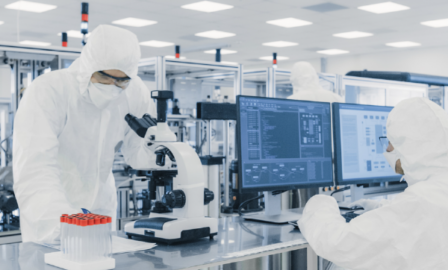How Femtech is Revitalizing the Medical Device Industry
Femtech is a term used to describe any device, software, service, product, or other kind of technology specifically designed to improve health outcomes for women. This includes reproductive and maternal health, as well as diagnostics and treatment for diseases unique to or more common in women. Medical devices aimed at addressing women’s health issues are revitalizing industry growth and drawing the attention of investors. Investors will pour an estimated $1 billion into the femtech sector this year alone, and experts anticipate the market will reach $50 billion by 2025. By starting more conversations about women’s health issues, the medical device industry can reap the benefits of tapping into an expansive market.
Why Femtech is Trending
Due to a lack of diversity in both clinical trial participants and in the field of finance, femtech has been forced to take its time entering the mainstream. Until 1993 the FDA did not allow all women to participate in pharmaceutical studies, leading to a lack of research about female health. Diseases specific to women cost the US $500 billion annually, and it takes a woman 3-11 years to receive a diagnosis for an issue like endometriosis as a result of a lack of care. Furthermore, women are still underrepresented in finance and make up a mere 11-to-12 percent of venture capital partners. These two factors, alongside cultural taboos surrounding feminine health, are a few of reasons femtech has only recently become popular.
Companies today are starting to realize that women are seeking information and solutions geared toward their body’s specific needs as part of the broader trend toward personalization in healthcare. Since women are 75 percent more likely to use digital tools for healthcare than men, it’s important to engage them through the channels they’re already using. Many of the devices in this category either consist of a mobile app or work in tandem with one. Companies may want to consider integrating physical devices with a digital solution in order to create a holistic solution to increase the value of care.
Examples of Digital Apps
One example of a femtech-oriented medical device is the Natural Cycles app, approved in 2018 by the FDA as a contraceptive. The app uses information entered by the user about her body temperature in order to make personalized recommendations. While some might disagree about the app’s efficacy or safety as a contraceptive, the FDA’s approval shows that the agency recognizes the growing interest in femtech devices. Similar apps will also be able to use the 510K clearance pathway under the low-to-moderate risk device classification.
Another femtech app capturing the community’s attention is Clue, a menstruation tracking app. With over 11 million active users, researchers have recognized the value of this data set and plan to leverage this information in clinical trials. The app collects self-reported user data about pain levels, emotions, and medication use. Researchers plan to draw conclusions about the effects of seasons, weather, exercise, and gut health on women’s bodies.
Examples of Physical Devices with Digital Apps
iSono health, developed by a team from Carnegie Mellon and Stanford, is a portable ultrasound breast scanner that uses AI to find early warning signs of breast cancer. The handheld device integrates with an app to create a 3D visualization. The device’s design allows anyone to operate the device, and a user at home could send the data she captures to her provider for interpretation. Since about 12 percent of women will develop breast cancer in their lifetime, finding diagnostic and treatment solutions for this disease is paramount.
The Bloomlife device has yet to be registered with the FDA, but it has the potential to provide personalized information about an individual’s pregnancy. The wearable sends data about the user’s contractions to an app for analysis. This information can then be sent to a healthcare provider to keep them abreast of any changes or reasons for concern. By using AI to identify markers of early labor onset, the developers hope to predict preterm birth or any risks of complications. Already, Bloomlife has the largest set of physiological data from pregnancies ever gathered.
These four femtech devices are just few examples of cutting-edge products on the market and in development. Device makers would be wise to consider expanding their portfolio to include assets in this rapidly growing space. When medical device manufacturers think about the needs of their audience, they can develop profitable and innovative solutions to answer some of the most common health issues women face.
Subscribe to Clarkston's Insights
Coauthor and contributions by Sabrina Zirkle



